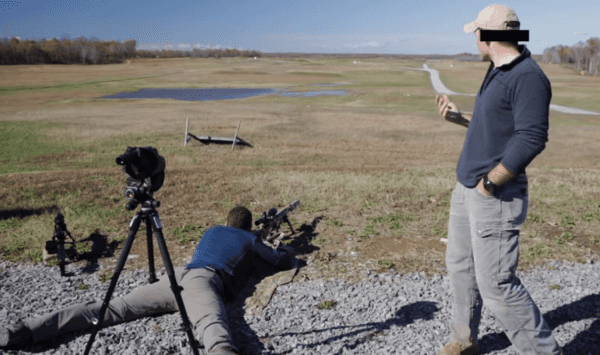There is a lot that goes into being an elite sniper in the military — much more than just aiming and firing. A sniper’s communication with their spotter is key to executing the task, no matter what the situation.
It’s especially important, however, that those communications don’t get picked up by the enemy.
The communication between the sniper and the spotter is hard to understand and almost monotonous to a civilian observer. It makes no sense, but that is the whole idea.
This video goes in-depth on the importance of having the right communication while sniping, and what the whole process is for a sniper from start to finish.

(Tactical Rifleman/Youtube)
It starts with a hasty search to identify any immediate threats and any dead space. Then, it’s a complete investigation of the sectors and breaking them down into smaller portions so they are easier to identify.
This ensures that any threat at all is not only identified, but also classified.

(Tactical Rifleman/Youtube)
Common verbiage is One Bravo or Two Alpha, which is displayed as the sniper speaks to his spotter, Brian.
There are three ways to talk on to a target: the direct method, the reference point method, and the clock ray method. The latter two have to be used in conjunction with each other.
The direct method is used to indicate targets that are easy to spot. The reference point method would identify less obvious targets. In the clock ray method, the sniper would imagine that a clock was present on the reference point to identify the most difficult targets, according to Cartalana.com
Once identified, the proper verbiage must be used to engage that target.
Check it out below:
The shooter used his eye to go to the two-three board, then to the three o’clock approximately 10 mils, then to glass. As soon as the shooter gets to the target, he will describe every detail of it and what’s around it. This is a very detailed description to ensure sniper and spotter have identified the same target.
In the video, both the sniper and spotter have identified a target at 1.6. Once the ballistic information is generated on the target, it is time to prepare to fire.

Special Forces Snipers Communicate
(Tactical Rifleman/Youtube)
Before any firing is done, there are some breathing techniques to do and then the shooter signals he is ready. Once the spotter hears those words, he will give the wind call, left .4 and that is the command of execution — it’s time to pull the trigger.
He shoots, and the target is hit with speed and accuracy.



